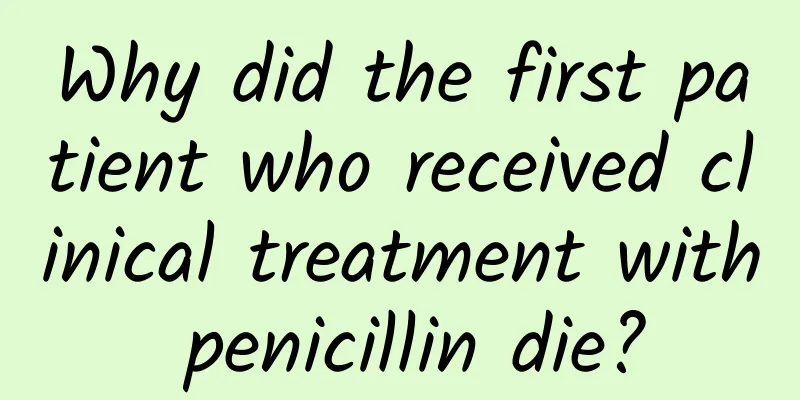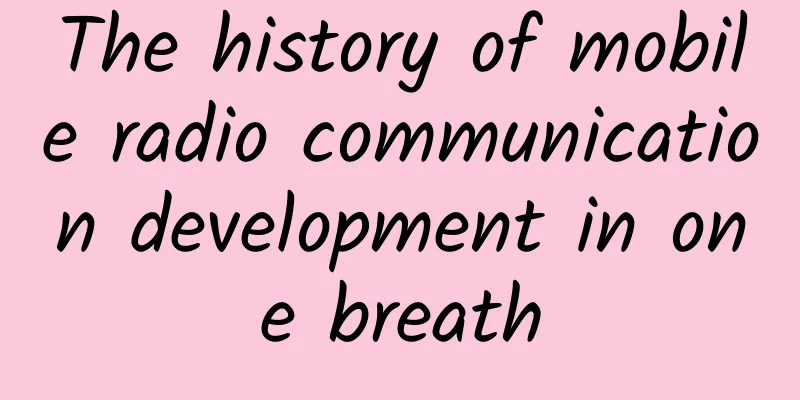Why did the first patient who received clinical treatment with penicillin die?

|
Guns and Roses of Penicillin History By Bill Sullivan, Professor of Pharmacology and Toxicology, Indiana University Compiled by Veronica Figure 1 The use of penicillin led to the antibiotic revolution. Whether in war or peacetime, the clinical application of penicillin has saved many lives. | Source: Science & Society Picture Library Albert Alexander's life was counting down. World War II broke out everywhere, and the people were in dire straits. Alexander was just a drop in the flood of this era. He was originally a policeman in Oxford, England. Unfortunately, a wound on his face became seriously infected, causing fatal sepsis. At this moment, countless terrible bacteria were attacking his blood. Alexander’s physician, Charles Fletcher,[1] described him as in unspeakable pain, “extremely ill and sadly ill.” The bacterial infection was eating him alive—he had already lost an eye, and pus covered his face and had even invaded his lungs. With all current treatments exhausted and death imminent, Dr. Fletcher thought Alexander would be the perfect candidate to try out a new experimental treatment. On February 12, 1941, a date that will be remembered in history, Alexander became the first person known to receive clinical treatment with penicillin. Within a few days, his condition improved dramatically. Figure 2 Albert Alexander in police uniform. He stands tall and smiling. | Source: Linda Willason (Alexander's granddaughter) As a professor of pharmacology, I am familiar with Alexander's story. I always use his story as an introduction to my annual antibiotic lecture. Like many other microbiology lecturers, I used to tell students that Alexander contracted sepsis after he accidentally scratched his cheek on a thorn while pruning a rose bush in his garden. This story has become mainstream not only in the scientific literature, but also in recent reports and books. The problem is that while the story about penicillin’s miraculous effects is accurate, the details about Alexander’s injuries are muddled, most likely due to wartime propaganda. Breaking the mold As early as 1928, microbiologist Alexander Fleming was aware of penicillin's potential as an antibiotic. Fleming, who was working at St. Mary's Hospital in London, later became famous for an unexpected discovery on a petri dish. Fleming was growing staphylococcal bacteria in a petri dish when he discovered that staphylococci could not grow normally in a dish contaminated with penicillium[2]. Fleming deduced that the "juice" of penicillium could kill certain types of bacteria. Figure 3 Bacteriologist Alexander Fleming uses a microscope to observe bacterial colonies on a petri dish. He is famous for discovering the antibiotic penicillin in 1928. | Source: Science & Society Picture Library Ten years later, a research team led by Howard Florey at Oxford University took on the arduous task of extracting and purifying the active substance from the "Penicillium juice" and formally testing its antibacterial properties. In August 1940, Florey and his colleagues published their groundbreaking research results [3]: the purified penicillin successfully cured a variety of bacterial infections in mice. Animal trials have achieved phased success, but human trials are difficult to carry out. Florey contacted Dr. Fletcher, hoping that he could help find a patient suitable for clinical treatment with penicillin. Later we learned that the selected patient was Alexander. At that time, he had no other way out. If he did not try the experimental treatment, his life would be in danger. As Dr. Fletcher said: "He has nothing to lose by taking penicillin treatment." At that time, purified penicillin was extremely scarce due to the slow growth rate of Penicillium and the low single-time yield. Compared with curing a mouse, the amount of penicillin needed to cure a person is much larger. Doctors had to recover and extract undecomposed penicillin from Alexander's urine, but even so, the amount of penicillin was not enough to completely eliminate the infection. On the 10th day after the patient's condition improved, the bacterial infection that had not been eradicated returned. Alexander ultimately did not survive this disaster. On March 15, 1941, he came to the end of his life at the age of 43. Even though the outcome was not what he had hoped for, Alexander's case still caused a sensation in the academic world, and research on penicillin attracted a lot of attention. Dr. Fletcher believed: "It is certain that penicillin can bring temporary relief to patients with bacterial infections. Most importantly, we did not observe any toxic side effects during the five days that Alexander received continuous injections of penicillin." On March 14, 1942, a year after Alexander’s death, doctors in Connecticut injected penicillin into another female patient[4]. The patient was Anne Miller, who was on the verge of death due to staphylococcal sepsis. After being injected with enough penicillin, Miller miraculously recovered completely and became the first person to be cured by penicillin. Miller’s recovery was extremely inspiring, and after that, achieving large-scale production of penicillin became one of the top priorities of the U.S. War Department[5], second only to the Manhattan Project (a plan to develop atomic bombs using nuclear fission reactions that the U.S. War Department began implementing in June 1942). During World War II, the use of penicillin not only helped prevent infection of soldiers’ wounds, but also gave soldiers infected with gonococci the opportunity to return to the battlefield. It is undeniable that the little penicillin played an indispensable role in the ultimate victory of the Allies[6]. Figure 4 A propaganda poster for "Racing Death" produced by the U.S. Army Department between 1942 and 1945. The poster reads: "The sooner this building is completed, the sooner the wounded soldiers will get the miracle drug that can save their lives - penicillin." | Source: Library of Congress The story of the rose bush is the thorn in their hearts Today, Albert Alexander is well known as the first person to use penicillin for clinical treatment, leaving a significant mark in history. It is also widely known that Alexander's "cause of death" was sepsis caused by a scratch on a rose bush. However, is this really the case? In 2010, Eric Sidebottom, a historian and author of Oxford Medicine: A Walk Through Nine Centuries, was interviewed[7] and revealed the truth. According to him, it was not the rose thorns that really injured Alexander on November 30, 1940, but the German bombing. The police station where Alexander worked was hit by a bomb, and the shrapnel of the ammunition scratched his face, which eventually led to his infection and death. Figure 5 Sheila LeBlanc holds a photo of her late father, Albert Alexander, in 2012. | Source: Linda Willason Alexander's daughter, Sheila LeBlanc, later moved to California, USA, and became an artist. In 2012, she confirmed Sidbottom's statement in an interview with a local newspaper[8]. In addition, LeBlanc also disclosed to the public the devastating blow that her father's death brought to their family. The house they lived in was not theirs, but was provided by their hometown for the village police. After Alexander's death, the LeBlanc family was forced to move out and became homeless in the turbulent times. Alexander's widow had to work outside because she lost her source of income. She was unable to take care of the children. LeBlanc and her brother were sent to an orphanage and experienced the ups and downs of life. She was only seven years old at the time. Michael Barrett, a professor at the Department of Biochemistry and Parasitology at the University of Glasgow, UK, once spoke to LeBlanc about Alexander's death via email. In a 2018 article[9], Barrett wrote that according to LeBlanc's recollection, the house they lived in did have a beautiful rose garden, but her father's fatal injury had nothing to do with it. It was the German blitzkrieg that killed her father, not a small rose thorn. In February 2022, I managed to contact Alexander's granddaughter, Linda Willason. Like her mother, Willason has become an artist in California. She confirmed the shrapnel story and said that the rose bush story was "just a wartime propaganda ploy." In order to maintain stability, the government at the time downplayed the damage caused by the bombing. Figure 6 An advertising poster about the role of penicillin in World War II, produced in 1944. The title of the poster is: "Thanks to penicillin, he will return home safely." The small print in the lower left corner says that the drug (penicillin) extracted from common mold has become the greatest wound healing agent in this war. | Source: Schenley Laboratories, Inc. While some may consider the cause of Alexander’s injury a minor detail, it is important to correct the historical record. Alexander was a dedicated police officer who was injured while performing his duties and died as a result. His death was tragic and deserves to be remembered. The story of the rose bush, though beautifully veiled, conceals the essence of his death in the line of duty. Alexander’s descendants hope that the truth will be made known and the fictional rose bush will fade into obscurity. In 2021, a plaque commemorating Alexander was erected in Newbury, England.[10] It reads: "On November 30, 1940, Police Constable Albert was injured in an air raid while on duty in Southampton. The wound caused staphylococcal and streptococcal infections and led to sepsis. Albert was transferred to Radcliffe Infirmary in Oxfordshire and became the first patient to receive clinical treatment with penicillin. After taking the medicine, his condition immediately improved significantly, but due to insufficient penicillin production at the time, the bacterial infection unfortunately recurred. He died on March 15, 1941. Albert made an indelible contribution to the history of antibiotic development." Figure 7 A plaque erected in 2021 tells the true story of Police Officer Alexander. Many years after his death, his story is finally free of rose thorns. | Source: Newbury Town Council/Wikimedia Commons References [1] Fletcher C. (1984). First Clinical Use of Penicillin. Br Med J (Clin Res Ed) 1984;289:1721 [2] Fleming A. (1929). On the Antibacterial Action of Cultures of a Penicillium, with Special Reference to their Use in the Isolation of B. influenzæ. British journal of experimental pathology, 10(3), 226–236. [3] Chain E. et al. (1940). Penicillin as a Chemotherapeutic Agent. The Lancet, Volume 236, Issue 6104, 226 - 228 [4] https://www.nytimes.com/1999/06/09/us/anne-miller-90-first-patient-who-was-saved-by-penicillin.html [5] https://www.washingtonpost.com/history/2020/07/11/penicillin-coronavirus-florey-wwii-infection/ [6] https://us.macmillan.com/books/9780805077780/the-mold-in-dr-floreys-coat [7] https://www.ox.ac.uk/news/science-blog/penicillin-oxford-story [8] https://www.pe.com/2012/11/02/redlands-local-artists-share-childhood-bond/ [9] https://mosaicscience.com/story/penicillin-first-patient-history-albert-alexander-AMR-DRI/ [10] https://www.bbc.com/news/uk-england-berkshire-57208267 Original link: https://theconversation.com/guns-not-roses-heres-the-true-story-of-penicillins-first-patient-178463 Special Tips 1. Go to the "Featured Column" at the bottom of the menu of the "Fanpu" WeChat public account to read a series of popular science articles on different topics. 2. Fanpu provides a function to search articles by month. Follow the official account and reply with the four-digit year + month, such as "1903", to get the article index for March 2019, and so on. Copyright statement: Personal forwarding is welcome. Any form of media or organization is not allowed to reprint or excerpt without authorization. For reprint authorization, please contact the backstage of the "Fanpu" WeChat public account. |
>>: Vitamin D is praised again! Research shows that it is a great helper for immunity
Recommend
Play together to earn community + live broadcast revenue 43 million transaction routine, quickly fill up the people and order words, easily realize the community project
Play together to earn community + live broadcast ...
Programmers, how much programming technology can you really master?
I always see some companies describe their job re...
iOS 11 installation rate has reached 59%, but it is lower than iOS 10 during the same period
On December 6, according to foreign media reports...
Guangzhou online medical consultation mini program function, how much does it cost to develop an online medical consultation mini program?
With the continuous development of informatization...
Five years of practical operation experience, revealing seven golden rules of user operation!
Preface: User operation is the most important par...
Will I end up owing a lot of money if I never cancel my mobile phone card or bank card?
Planning and production Source: Curious Doctor Ed...
Is it okay to drink coconut water that costs 9.9 yuan per liter? The truth is revealed...
As the weather gets hotter, has your blood been r...
A new perspective on ToB: Exploring methods for evaluating the mini-program ecosystem
After the COVID-19 pandemic in 2020, mini program...
Be careful, "electronic mustard tuber" is increasing your weight and harming your stomach
In recent years, a product of the new era seems t...
I couldn't stop laughing. Snickers is simply the king of advertising spoofs!
Snickers' advertisements always create a wave...
Why do operators need to do data analysis?
1. Operations generate data, and data supports op...
More than 200 children became "star chasers" because of him!
“Craters and lunar seas can be seen clearly” Rece...
What happened to the Changchun epidemic in 2022? When will the unblocking end? Attached the latest news
Among the local epidemics in Jilin Province recent...
In unison, why are BAT collectively imitating LeEco's ecosystem?
In 2014, "ecosystem" became a fashionab...
An event operation and promotion plan that can be used directly!
Do you still remember the NetEase opening class t...









